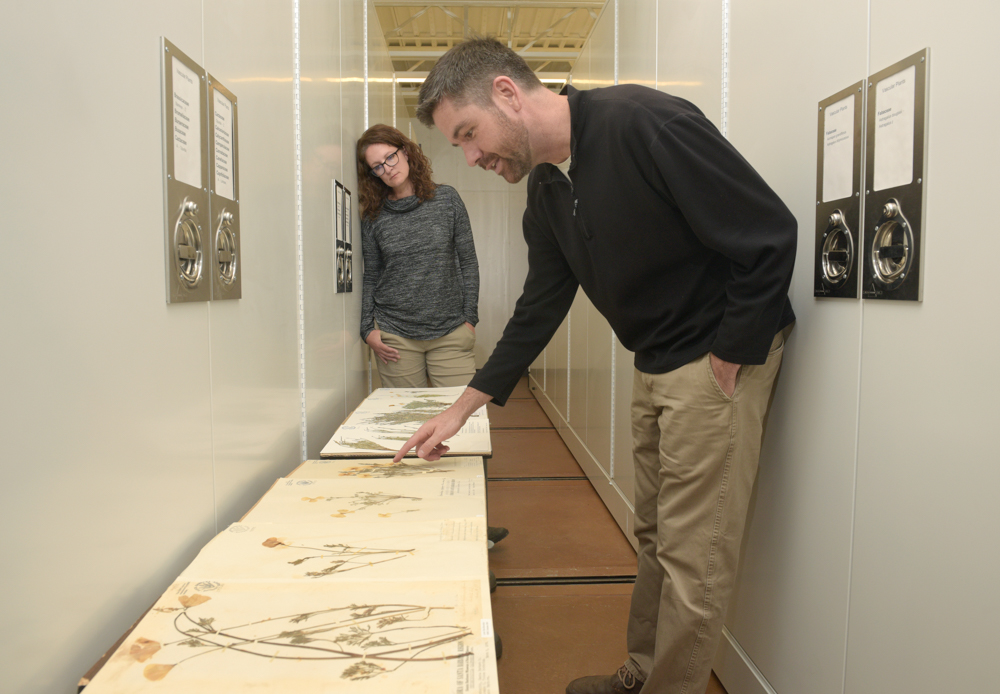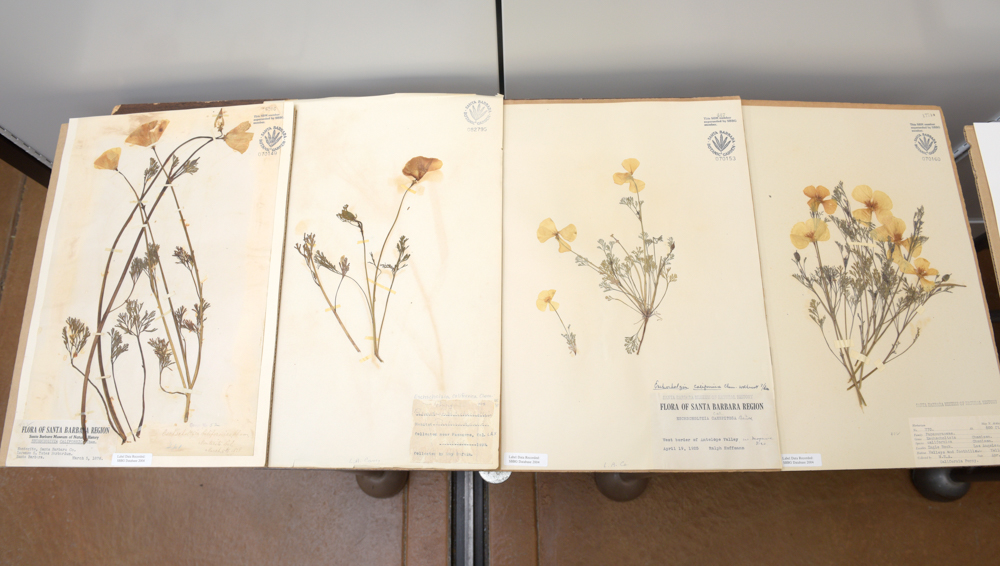Inside the Botanic Garden’s Fort Knox of Pressed Plants
Flora Are the Foundation of All Habitats and Will Help Stave off Ecological Collapse

Under a new climate regime, there will inevitably be winners and losers, explained Dr. Denise Knapp, the Santa Barbara Botanic Garden’s director of conservation and research. Some plants will adapt and withstand the changes while others will struggle to hang on. Already in Santa Barbara we can pick out members of both groups.
Toyon, a perennial shrub that’s part of the chaparral community, and a number of sunflower species are doing just fine, said Knapp. Bishop pine trees on Santa Cruz Island, however, are dying en masse from reduced fog and moisture levels. Manzanita is struggling too, said Knapp, as is the salt marsh bird’s beak, a federally endangered plant that’s especially sensitive to fluctuations in elevation and salinity. “It’s really the poster child for sea-level rise and climate change,” she said.
Since Knapp joined the Botanic Garden six years ago, she’s grown the Mission Canyon campus into a powerhouse of research and conservation, increasing its science staff from just a couple to a team of 11. Soon, a lichenologist and fire ecologist will join their ranks. Through field work and lab time in their impressive new headquarters perched above Las Canoas Road, they’re observing and cataloging the diversity of plant life throughout the Santa Barbara region.
“Some people might think that conserving California native plants and habitats is too niche in the context of climate change,” said Knapp. “They might think we have bigger fish to fry. But this is actually the crux of it. Plants are the foundations of all habitats, and they support all critters, from bugs to vertebrates.” The best way to stave off the detrimental effects of our out-of-whack weather patterns, she said, is to maintain an ecosystem’s healthy abundance of plant life. “Diversity will provide resilience to the change that’s coming,” she said. “It will help stave off change.”

Garden researchers regularly trek into the backcountry by pack mule and spend days observing, collecting, and pressing specimens. Those are then stored in the herbarium, a Fort Knox of botanical knowledge ensconced deep in the Botanic Garden’s headquarters behind half a dozen doors and many feet of fireproof concrete. Along with a highly protected Noah’s Ark–type seed bank, it holds 150,000 leafy specimens gently stacked in the kind of movable shelving you’d find in the special collection section of a library. The staff is also now in the process of scanning each pressing into an open source database with a specific focus on phenology.
Phenology is the study of seasonal life cycles in plants and animals, and understanding how the changing climate is affecting these cycles is critical to meeting the challenges of the planet’s climate-changed future. The Botanic Garden is one of 22 institutions contributing to the database, which will hold over 900,000 scans by the time it’s complete.
Meanwhile, Botanic Garden researchers are also busy mapping plant regrowth and gathering data throughout the Zaca and Thomas Fire burn scars. Many of the areas, even before the fires, were known as “botanical black holes,” huge swaths of land that have received little scientific study. “The common thought is we know everything and [have] been everywhere,” said Knapp. “The fact is we know so little about the basic evolutionary history of a lot of plants.”
All of these efforts, Knapp explained, help inform future conservation and restoration work, including a new project to protect the aforementioned salt marsh bird’s beak. “In terms of habitat, we’ve already lost a lot,” she said. “It’s not enough anymore to just set land aside. You have to actually restore the habitat too.” Volunteers are vital to these labor-intensive projects, Knapp said, and while the Botanic Garden is blessed with a steady stream of them, it’s always in need of more.
For volunteer opportunities, and to learn more about the Botanic Garden’s work, including dates of upcoming presentations and lectures, visit sbbg.org.



